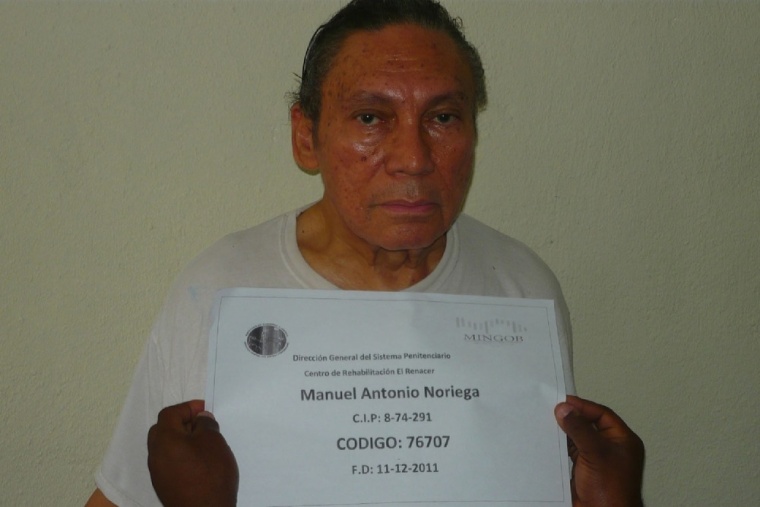Manuel Noriega, Panama's drug-running military dictator of the 1980s, was taken from prison to a public hospital on Sunday after suffering a possible stroke.
Health Minister Franklin Vergara said Noriega's blood pressure was very high. Doctors saw signs of a possible brain hemorrhage when the former military strongman arrived to a hospital.
Further X-rays and evaluations yielded normal results, Vergara said.
"He is conscious, knows where he is and we are not finding any injury with long-term effects at this moment," Vergara said.
Noriega will remain in intensive care for 24 hours, he said.
Panama's National Police said earlier Sunday in a statement that the 77-year-old Noriega had possibly suffered a stroke. Police took him from El Renacer prison where he was serving out his sentence to Hospital Santo Tomas in Panama City.
Paralysis
One of his three daughters, Sandra, was seen entering the hospital, which was guarded by police agents.
In December, Panamanian authorities said Noriega was suffering from mobility due to a stroke several years ago. He had paralysis on his face's left side and leg.
Noriega, who was toppled by a 1989 American invasion, is serving a 20-year sentence for the murders of opponents during his rule.
He spent about 20 years in U.S. and French prisons on drug-trafficking and money-laundering convictions, before returning to Panama on Dec. 11, 2011. Shortly after returning home under heavy security, he was seen publicly in a wheelchair being helped by prison authorities.
Noriega was Panama's longtime intelligence chief before becoming its top leader.
While he had been considered a valued CIA asset for years, the U.S. government soured on him, especially after a top political opponent was killed in 1985 and Noriega appeared to join forces with Latin American drug traffickers.
'Deadly white powder'
U.S. President George H.W. Bush ordered an invasion in December 1989 to oust him from power. He was captured and brought to Miami.
Prosecutors said Noriega helped the Medellin cocaine cartel ship "tons and tons of a deadly white powder" into the United States. But the defense said the indictment "smells all the way from here to Washington."
Jurors convicted him in April 1992 of eight of 10 charges. Under the judge's instructions, they were told not to consider the political side of the case, including whether the U.S. had the right to invade Panama and bring Noriega to trial in the first place.
When his 17-year sentence ended in 2007, France extradited him on money-laundering charges.
Noriega also had legal troubles awaiting him in Panama, where he had been convicted in absentia of murder, embezzlement and corruption charges that carried a combined 60-year prison sentence.
Noriega's return home had little political impact on a country that has enjoyed an economic boom in recent years amid a $5.25 billion expansion of the Panama Canal.
Widely reviled when he was Panama's de facto leader from 1983 until 1989, his small cadre of remaining supporters has kept a low profile.
Activists hoped his return could shed light on the dictatorship's mysteries, including some 100 unsolved killings or disappearances in the period of army rule from 1968 to 1989.
